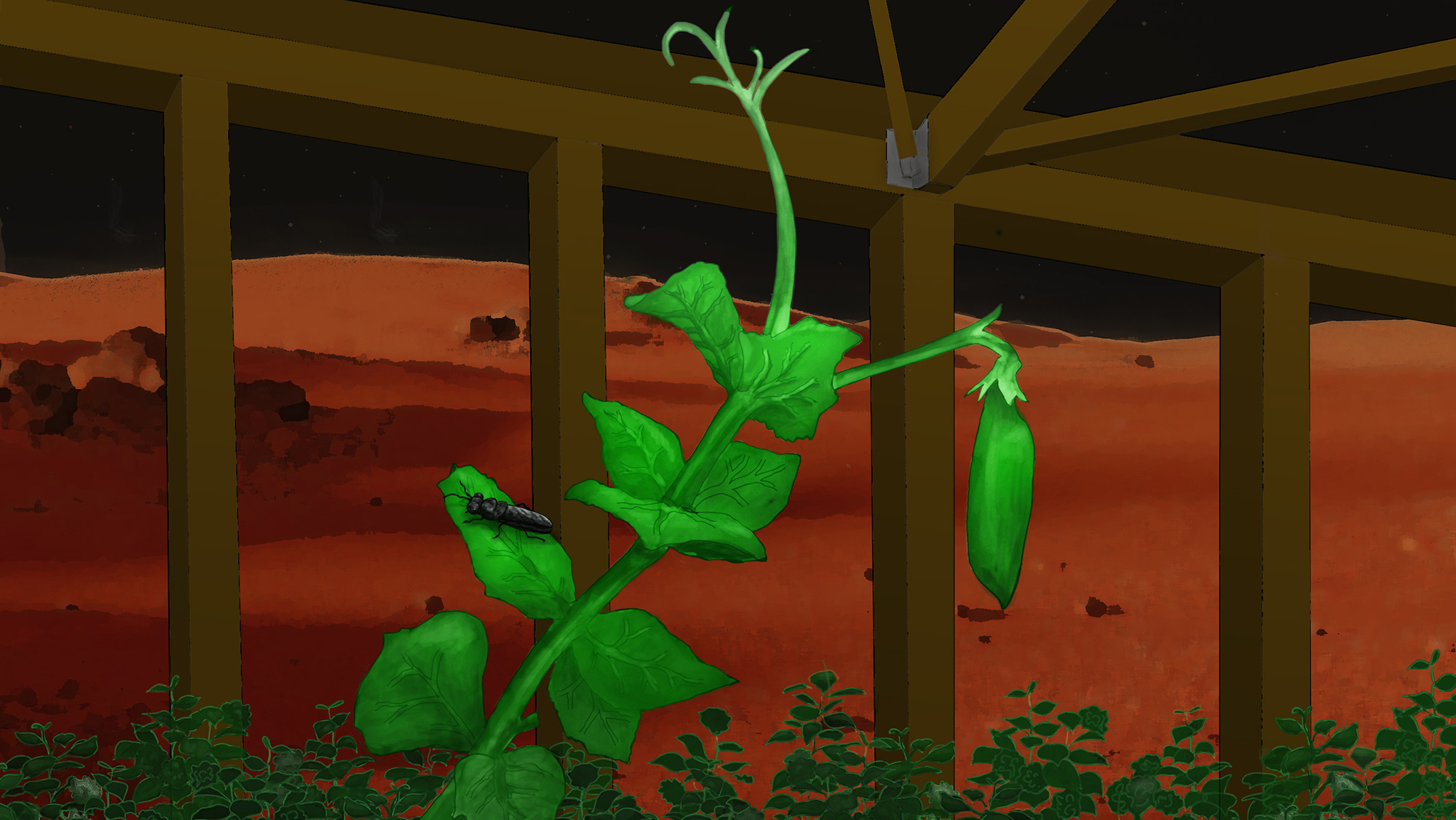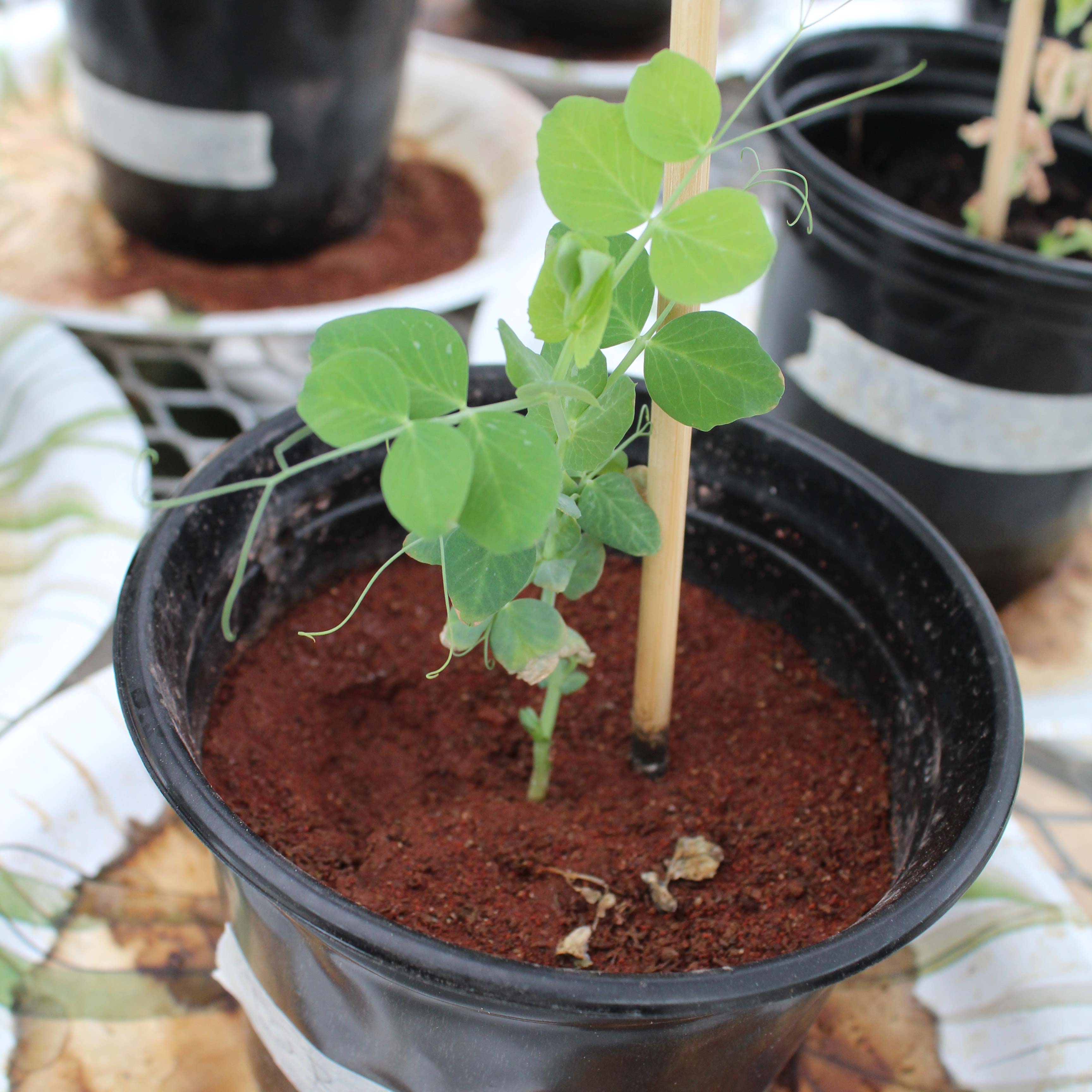
Once we travel to another planet, we’ll face the next challenge — how to survive. Emmanuel Mendoza began tackling that problem in his parent’s garage during his senior year of high school.
“I’ve always been interested in human space systems, specifically, how we grow or how humans live in long-term space environments,” said Mendoza, an aerospace engineering student at Texas A&M University.
This interest began with a high-school science project testing if radishes would grow in Martian regolith (simulated Martian soil). Today, he’s upgraded from a garage to the Forensic Laboratory for Investigative Entomological Sciences (FLIES) Facility at Texas A&M, where he experiments with growing pea plants in simulated Martian soil with the help of black soldier flies.
An insect is a spaceman’s best friend
During his freshman year at A&M, Mendoza scrolled through the Aggie Research Program’s website for an undergraduate research opportunity that would allow him to bridge his interests in aerospace engineering and sustainable agriculture. One project caught his eye. Noah Lemke, a Texas A&M graduate student, was researching black soldier flies under the direction of Dr. Jeffery Tomberlin, professor and AgriLife Research Fellow in the Department of Entomology in the College of Agriculture and Life Sciences.
“Black soldier flies are on the rise due to their ability to break down basically any organic matter – feces, animal waste, organic waste, plant matter – a lot of things that are generally non-useful,” said Mendoza.

As a byproduct of digesting this biomatter, the black soldier fly larvae produce frass, which is essentially insect waste.
“Because of the way their gut works, it is found to be a really good soil supplement, like fertilizer to plants,” said Mendoza. “I saw this and thought, if you can use this for plants, what’s to prevent you from using it with something that doesn’t usually support life?”
Since then, Mendoza has been experimenting with pea plant growth in Martial soil using varying amounts of frass. He potted pea plants in regular and Martian soil and experimented using 0 percent to 100 percent frass.
To his surprise, green pods sprouted from the red regolith.
Taking root in red soil
Mendoza found that exceeding anything greater than 50% frass would destroy the plant’s ability to grow but adding 10% frass to the Martian soil was the optimum amount for plant growth.
“This tells us that frass is being used by the soil. It’s also showing us the plants are definitely up-taking something from the soil,” he said. “It definitely shows that the Martian regolith is not so inert that plants will not grow. It’s showing us that there is a certain functionality, a certain usefulness in Martian regolith.”
Even with 0 percent frass, he saw flowering and pod growth in plants potted entirely in Martian soil.
“That was really interesting. It shows that plants are super resilient. They can learn to thrive and grow in even the most austere conditions, and that we can do a lot with the things that we already have on hand and species that already exist,” he said. “And we can do a lot to make those environments more favorable.”
We need to have options to grow things in environments that we really haven’t grown them in before, and I think that’s where this comes in because Martian regolith is the hardest.
Mendoza presented his findings at the 2023 Entomological Society of America Conference in Washington, D.C.
Planning ahead for life on land and among the stars
In addition to being an aerospace engineering major, Mendoza has a double minor in agricultural systems management and mathematics. He hopes that his education and ability to layer his interests will lead him to the forefront of sustainable agriculture — for space and for Earth.
“Looking at long-term work not necessarily space-related, we need to find additional soil supplements to grow things on Earth in order to continue having sustainable agriculture,” said Mendoza. “We need to have options to grow things in environments that we really haven’t grown them in before, and I think that’s where this comes in because Martian regolith is the hardest. If you can master that, then I think you can work backward and develop good novel farming techniques for growing things on Earth.”
Now, in his second year of experiments, he is focusing on soil analysis and plant mass analysis. With every potted pea plant, he gathers data that intersects agriculture, entomology and aerospace engineering.
“I want to focus on the life support and the food science aspect of supporting astronauts in their field. I want to build a system that demonstrates this is possible in zero gravity,” said Mendoza.
Until he begins building that system, he continues growing plants and gathering data on how fly larvae may be humanity’s golden ticket to survival.